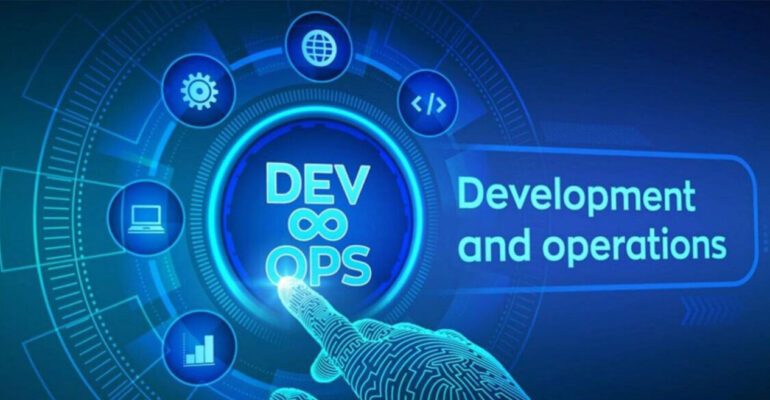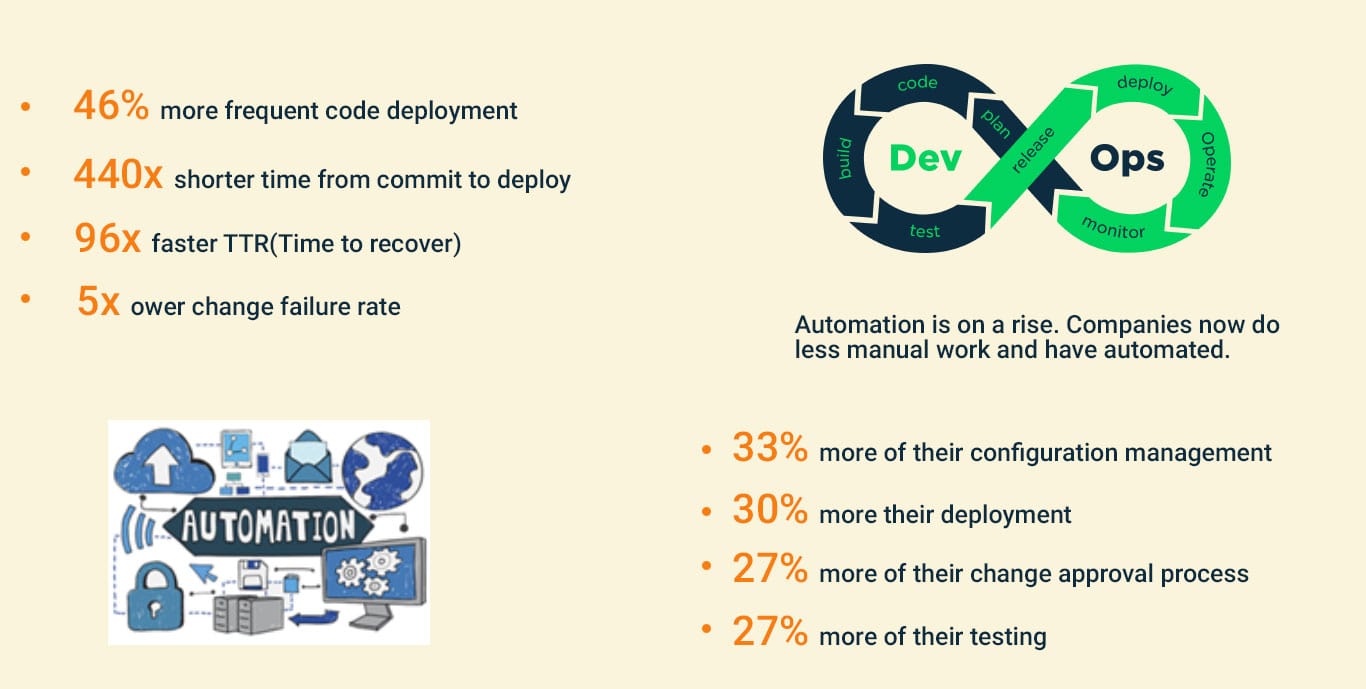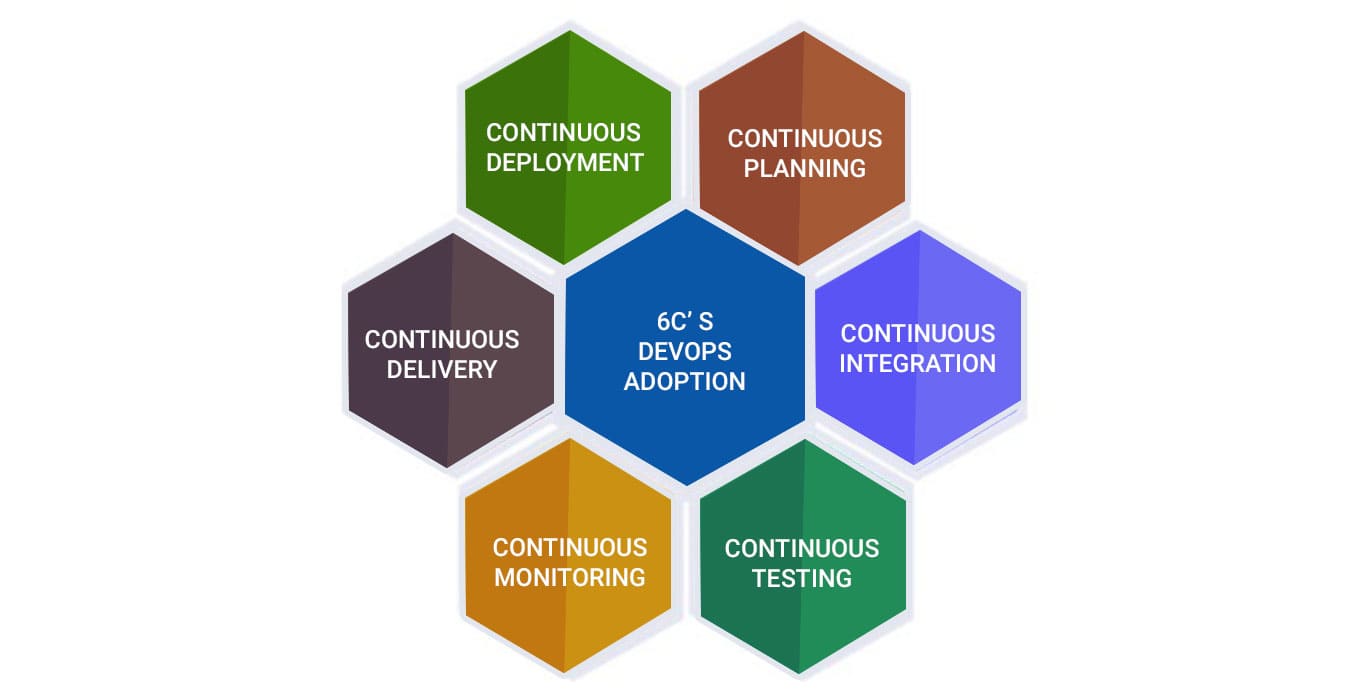
DevOps is an approach to software development which integrates developers and operations team in order to improve collaboration and productivity by automating infrastructure, automating workflows and continuously measuring application performance. Its acceptance has increasingly increased over the years and has become the most popular buzzword in the software development world in 2019.
It has brought many benefits in the form f better communication and seamless collaboration. To aid this process to be more efficient, new tools and disciplines are emerging. DevOps approach to development provides numerous benefits.
The findings of The State of DevOps report are: DevOps adoption report by Atlassian stated that 41% of IT experts are familiar with DevOps as a service to some extent. This makes the companies, about 41% with a competitive advantage over their competitors. 90% of IT specialists have accepted that they have experienced positive results due to DevOps transition.

AI & DevOps Integration:
Automation Will Take The Centre Stage:

